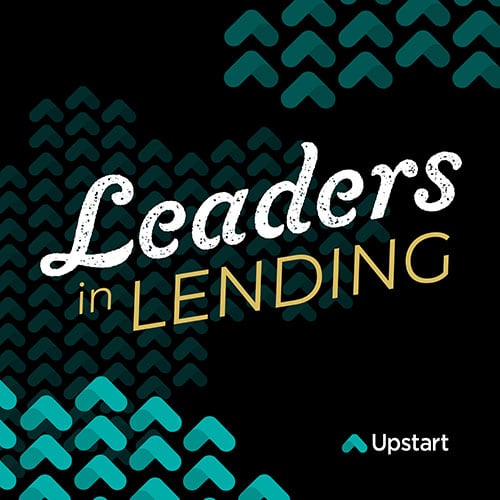Leaders in Lending | Ep. 57
Tapping into the Unsecured Personal Lending and Auto Refinance Opportunities
Jay Fee, Vice President of Consumer Banking at PenFed Credit Union, joins the show to discuss the mechanics of unsecured consumer lending and auto refinancing, and why financial institutions should make the most of these opportunities.


GUEST SPEAKER
Jay Fee

ABOUT
PenFed Credit Union
Established in 1935, PenFed today is one of the country’s most stable financial institutions, serving 2.7 million members worldwide with $30 billion in assets. PenFed offers a wide range of financial services to help its members with loans, savings and credit cards. PenFed serves members in all 50 states and the District of Columbia, as well as Guam, Puerto Rico and Okinawa. The credit union is federally insured by NCUA and an Equal Housing Lender.
Key Topics Covered
- The history of the unsecured consumer lending and auto refi space
- How lenders and fintechs can create symbiotic relationships
- Why auto refi is an excellent untapped opportunity
- How fintechs can help lenders seize the opportunity

“Banks are good at banking, but they're not always good at marketing and product creation. That’s where fintechs come in.”

“There’s still room to grow in the refi market.”

“A bank is more than just originating loans. It's managing a balance sheet, it's making profitable loans, it's managing risk, but it's also, in some cases, selling those loans that you don't want to hold on your balance sheet.”
EPISODE RECAP & SUMMARY
There are two lending spaces that tend to be underappreciated by many financial institutions: unsecured consumer lending and auto refinancing.
Jay Fee, Vice President of Consumer Banking at PenFed Credit Union, has considerable experience with both. He joins the show to discuss the mechanics of unsecured consumer lending and auto refinancing, and why financial institutions should make the most of these opportunities.
We discuss:
- The history of the unsecured consumer lending and auto refi space
- How lenders and fintechs can create symbiotic relationships
- Why auto refi is an excellent untapped opportunity
- How fintechs can help lenders seize the opportunity
A brief history of unsecured personal lending & auto refi
Unsecured personal lending and auto refinancing are fairly underappreciated spaces today. But according to Fee, that wasn’t always the case, at least for unsecured personal lending.
“It seems like unsecured, in the early 2000s, was really beginning to gain a lot of attention, especially from bill consolidation,” he says.
Plenty of players were entering the space and many of them got big really fast.
Now unsecured loans are back. Why?
According to Fee, “as long as you can originate them and outpace the losses by 700-800 basis points, which you can do, then you can even sell these to hedge funds.”
Auto refinancing is different. Its popularity has dissipated in recent years, mainly because people are making more money on unsecured and point of sale.
Plus, consumers have grown wise to new products and financial tools.
“You have these new instruments that are coming out like credit cards that can easily be converted to fixed rate loans if you’re not using it for large individual transactions,” Fee says.
Symbiotic relationship of lenders and fintechs
Banks and fintechs make great partners. Each brings certain strengths to the table.
Banks have centuries of expertise with banking fundamentals. They excel at managing balance sheets, making profitable loans, and managing risk. But because they are tied to legacy systems and beholden to a heavy regulatory environment, they aren’t very good at innovation and at moving quickly.
Fintechs on the other hand excel at innovation. Their bread and butter is coming up with new products with frictionless user experiences and marketing those products to the masses. What they lack, however, is expertise with balance sheet management and other banking basics.
According to Fee, some banks have taken to forming relationships with multiple fintechs to, “try and boat race to see which one is going to be the best of the best and then buy them.” In some cases, that strategy works. In others, he explains, it actually kills what was good about the fintech.
Untapped opportunities in auto refi
Fee spent a large portion of his career in the auto industry, first with the nation’s largest distributor of automotive accessories, then a stint at Volkswagen where he ran dealer relations, followed by a leading role in standing up one of the largest refi shops in the country at Capital One.
Needless to say, he has an incredible 360-degree perspective on the topic.
Because of a variety of factors (quality improvements to vehicles, the decline in new car sales, and the coming reduction in used car prices, to name a few), Fee believes that dealerships will raise the overall prices of vehicles in order to generate revenue.
As long as dealerships are forced to raise prices, there will be opportunities for auto refi shops to get to consumers within the first 30-60 days of origination with better rates.
The need for help from fintechs
Most financial institutions need help from fintechs to do auto refinancing right. Mailings were the top strategy for a long time, but nowadays, auto refinancing requires digital methods, and most financial institutions are still in the midst of their digital transformations.
Until financial institutions focus on improving their own digital methods for origination, they will need a fintech partner to help them reap the benefits of this space.
And according to Fee, the benefits in this space are vast.
“If this space was functioning with a lot of really hardcore folks in the business and you were reaching all the people you should be reaching, somewhere around 100 billion would be refinanced every month.”
Stay tuned for new episodes every week on the Leaders in Lending Podcast.




